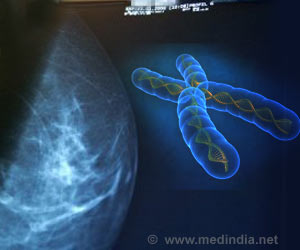Twist, Snail, Slug. These words may sound like words from a children's nursery rhyme.

One protein with the even more out-there name of ZEB1 (zinc finger E-box binding homeobox 1), is now thought to keep breast cancer cells from being successfully treated with radiation therapy, according to a study at The University of Texas MD Anderson Cancer Center in Houston.
Li Ma, Ph.D., an assistant professor of experimental radiation oncology at MD Anderson, reported in this month’s issue of Nature Cell Biology that ZEB1 may actually be helping breast tumor cells repair DNA damage caused by radiation treatment by ramping up a first-line of defense known as DNA damage response pathway.
"Radiation therapy causes cell death by inducing DNA ’ breaks’," said Ma. "The rationale for treating tumors with radiation without damaging normal tissues is that, compared with normal cells, tumor cells are actively dividing and often have defects in DNA damage repair machinery."
Tumor cells are thus less able to repair DNA damage. But not always. Sometimes the body produces tumor cells resistant to radiation. They are somehow able to "turn on" the DNA damage response apparatus. Until now, the question has always been how?
Ma’s team has demonstrated that the wily tumor cell’s ability to push the panic button at the last second can be triggered by ZEB1’s penchant for launching an operation that generates cancer stem cells.
EMT is one way the body responds to wound healing and it is believed that cancer has found a method for using EMT to promote tumor progression.
The hope is that new approaches to addressing radiation resistance may be developed through gaining better insight into how this signaling pathway keeps tumor cells growing despite being bombarded with toxic radiation treatments.
"Radiation therapy plays a key role in breast cancer management," said Ma. "To overcome the obstacle of radioresistant tumor cells, it is important to identify the critical causes and to develop safe and effective new methods for treatment including the possible use of agents that target ZEB1 and which inhibit CHK1."
Source-Eurekalert
 MEDINDIA
MEDINDIA




 Email
Email










